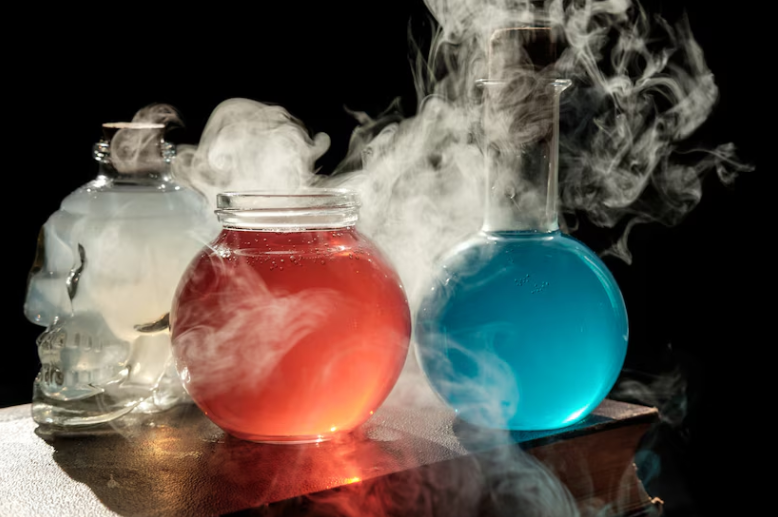7.10 Reaction Quotient and Le Châtelier’s Principle: A Deeper Dive
Revisiting Le Châtelier’s Principle Through the Lens of Q
In our previous discussion on Le Châtelier’s Principle, we explored how chemical systems at equilibrium respond to external changes like shifts in concentration, temperature, and pressure. But have you ever wondered why these shifts occur in the first place? In this guide, we’ll dive deeper into the mathematical justification using the reaction quotient (Q) to show how and why equilibrium adjustments happen.
The Reaction Quotient (Q) Recap
Before diving in, let’s quickly recap what the reaction quotient (Q) is. Q is a measure that tells us the ratio of the concentrations of products to reactants at any given point in a reaction—not just at equilibrium. Here’s the key distinction:
- K (Equilibrium Constant): Calculated using concentrations at equilibrium.
- Q (Reaction Quotient): Calculated using concentrations at any point.
When Q = K, the system is at equilibrium. If Q ≠ K, the reaction shifts to reestablish equilibrium, guiding our understanding of Le Châtelier’s Principle.
How Q Justifies Changes in Equilibrium
1. Concentration Changes
Imagine you have a reaction at equilibrium:
A ⇌ B
According to Le Châtelier’s Principle, if you increase the concentration of B, the system shifts left to produce more A. But why? Let’s break it down using Q:
- Q = [B] / [A]
- By increasing [B], Q becomes larger than K (Q > K).
This means there’s an excess of products relative to equilibrium. To counteract this imbalance, the system shifts left to decrease [B] and increase [A] until Q = K again.
Conversely, if [A] is increased, Q < K and the reaction shifts right to produce more B.
Visual Example:
- When the concentration of products increases, Q > K, prompting a shift toward reactants.
- When the concentration of reactants increases, Q < K, prompting a shift toward products.
2. Pressure Changes (for Gaseous Systems)
Pressure changes affect the equilibrium of systems involving gases. Le Châtelier’s Principle tells us that increasing the pressure causes the equilibrium to shift toward the side with fewer moles of gas, and vice versa. But why?
Consider a reaction:
3A(g) + B(g) ⇌ 2C(g)
Let’s use Q to see what happens when the overall pressure increases:
- Qp = P(C)² / P(A)³ * P(B)
- When pressure increases, partial pressures increase. Suppose the pressure doubles:
- New Qp = (2P(C))² / (2P(A))³ * (2P(B)).
- Simplifying, the denominator’s increase outweighs the numerator’s increase, resulting in Qp < Kp.
To restore equilibrium, the reaction shifts to produce more C (products), reducing the number of gas molecules and counteracting the pressure increase.
Summary: When pressure changes, the system responds by shifting toward the side with fewer moles of gas (if pressure increases) or more moles of gas (if pressure decreases).
3. Temperature as a Special Case
Unlike concentration and pressure, temperature changes affect the value of K itself—meaning Q doesn’t apply to temperature changes in the same way. Here’s how temperature works with Le Châtelier’s Principle:
- Exothermic Reactions (ΔH < 0): Heat is a product. Increasing temperature shifts equilibrium left, favoring reactants.
- Endothermic Reactions (ΔH > 0): Heat is a reactant. Increasing temperature shifts equilibrium right, favoring products.
Think of K as a temperature-dependent value. When temperature changes, K adjusts accordingly, and the reaction shifts to maintain balance.
Quick Reference Table: Using Q to Predict Equilibrium Shifts
| Change | Effect on Q | Direction of Shift |
|---|---|---|
| Increase [Products] | Q > K | Shift left (toward reactants) |
| Increase [Reactants] | Q < K | Shift right (toward products) |
| Increase Pressure (fewer gas moles) | Q < K | Shift toward products |
| Decrease Pressure (more gas moles) | Q > K | Shift toward reactants |
| Increase Temperature (Exothermic) | Changes K value | Shifts toward reactants |
| Decrease Temperature (Exothermic) | Changes K value | Shifts toward products |
Real-World Application: Q and K in Action
Industrial Example: The Haber Process
N₂ + 3H₂ ⇌ 2NH₃ (ΔH < 0)
- Increasing pressure shifts equilibrium toward NH₃ (fewer moles of gas).
- Increasing temperature shifts equilibrium toward N₂ and H₂ (endothermic reaction favored).
By understanding Q and K, industries can optimize yield by manipulating conditions to favor product formation.
Mastering Q and K for Equilibrium Control
Understanding how Q relates to K gives you a powerful tool to predict and explain shifts in chemical reactions. By applying Le Châtelier’s Principle through the lens of the reaction quotient, you’ll deepen your understanding of equilibrium dynamics and be better equipped to tackle challenging chemistry problems.







